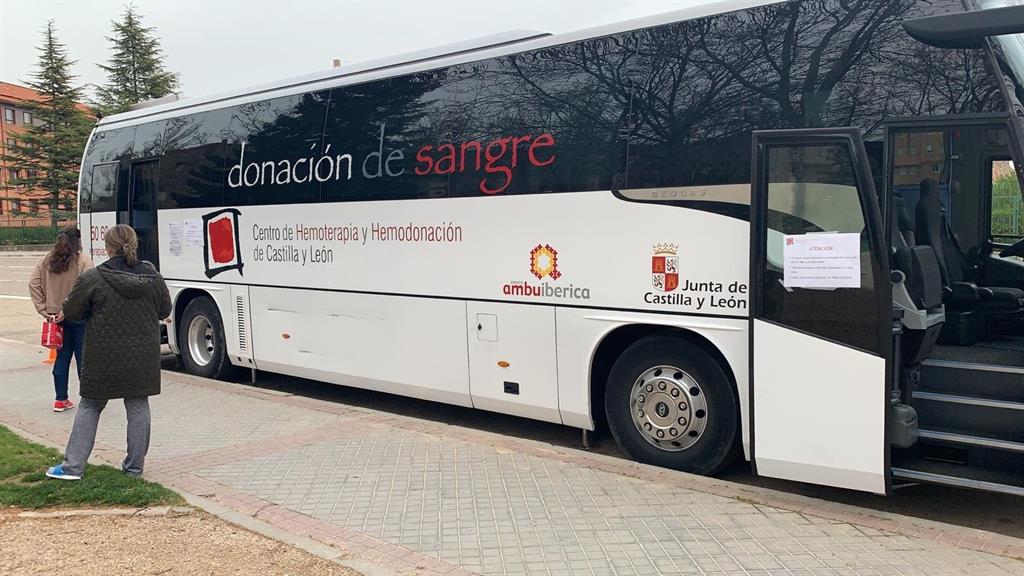It closes with a decrease in donations of less than 2% despite confinement, suspension of collections and reorganization
VALLADOLID, 31 One. (EUROPA PRESS) –
The merit and patience of the donors has been the “fundamental” piece that has allowed the Center for Hemotherapy and Hemodonation of Castilla y León (Chemcyl) to get ahead in a “complex” 2020 marked by COVID in which there has been a home confinement, there has been a suspension of collections and closures of donation points to establish others in which it has been possible to maintain the activity in a totally safe way.
This has been highlighted by the director of Chemcyl, Lydia Blanco, who has taken stock of a “very problematic” year in terms of logistics and organization of donations but “fantastic” in terms of assessing the response of donors “because it has not been easy”.
In the context of the pandemic, it has been necessary to suspend the collections programmed in universities or companies, stop collecting donations in health centers and hospitals and even not go to towns where this type of campaign was carried out due to fear of contagion and the unknown.
Even so, the number of donations registered throughout 2020 in general terms has only decreased by 1.95 percent, but with variations that reflect the difficulties that have been faced, such as the decrease of close to 20 percent of the donations in collections compared to the 33 percent increase in fixed points.
In absolute terms, the number of donations has risen to 103,624 compared to 105,689 in 2019 (-1.95 percent), but in the case of blood donations the decrease is lower (they go from 99,070 to 97,445, 1.64 percent less).
All this to continue to maintain donations with procedures that are totally safe due to the anti-COVID protocols that Chemcyl has implemented, which even have an AENOR certification and are very strict in the disinfection of the places to donate or the taking temperature, among other measures.
Blanco, in statements to Europa Press, explained that the “first problem” they faced was that they had to remove all the donation points from hospitals and leave health centers because there was the “great avalanche” of patients arriving with COVID.
To this was added later the confinement, which did not favor “anything” because it was forbidden to go out on the street and forms had to be enabled that allowed people to donate through certificates and the request for special permits, but also the pandemic arrived in the period of collections from the universities, suspended, like many other collections and the fear in the towns “of what could happen” and of the “unknown.”
GOOD ANSWER
Added to this was the difficulty of installing mobile units in the streets, which is why temporary fixed points were set up, in addition to those that were available, and extraordinary appeals to donors were initiated with many calls or SMS. “The response was great, well above what we could expect,” said Blanco.
Thus, a “downturn” in donations was recorded, mainly in part of March, in April and May, but this corresponded to the decrease in transfusion needs in hospitals in most products except platelets, since fundamentally directed to the treatment of cancer patients and were still admitted, which was compensated by apheresis procedures – a procedure by which platelets are obtained – which were duplicated with an appeal to donors of this type, who came to provide the doses necessary.
In all this context, the director of Chemcyl has stressed that “fortunately” they have been accompanied by the security measures of their staff have worked, since it was a “fear” they had, that there would not be enough staff to become ill or have to isolate. However, the rate of infections within the center has been “zero” and outside the center the staff has been cautious and the incidence rate of COVID has been “very low.”
In short, as Lydia Blanco has pointed out, the year has ended thanks mainly to the merit of the donors, although it has been a year in which the work has been more complicated and complex to organize after which only 1,500 donations have been reduced of blood if what happened in the first phase of the pandemic is taken into account.
Even so, throughout the entire year 2020 there has been stock and the necessary blood has been supplied “perfectly” to hospitals where it was needed, when in other transfusion centers in Spain there have been “very important potholes”, too Thanks to the forecast that was had, since in February, a month in which donations traditionally decrease, donations were deliberately increased due to the observation and arrival of the pandemic in other countries and the possibility that they had to be rejected to donors who had visited these countries as it had to be done.
For this reason, he reiterated that, in addition to the work of the Chemcyl staff, the response of donors has been essential, who have had to endure long queues also due to the incidence of “strict” anti-COVID procedures to guarantee their safety , which makes everything go slower. “They have been patient, they have responded marvelously,” insisted Blanco, who has expressed “tremendous gratitude” to the “patient donor, calm and willing to collaborate.”
Currently, the director of Chemcyl explained, there is a stock slightly higher than usual, with the anticipation of what may happen and because some of the operations that are usually carried out in hospitals have also been reduced.
ESSAYS
In addition to the usual activity carried out by Chemcyl, the arrival of the pandemic has caused the center to get involved in other work related to COVID-19.
Thus, since March it began to collaborate with the ConPlas-19 clinical trial, led by the Puerta de Hierro Hospital in Madrid and funded by the Carlos III Health Institute, which is about to close and whose results are close to publication .
Likewise, it is participating in an observational study of plasma extraction from people who had suffered from COVID and had a high antibody titer for transfusion into patients.
In the same way, after the summer, the collaboration began with the Grifols company project for the production of specific anti-Sars-Cov-2 immunoglobulins, that is, the preparation of a medicine. To do this, Chemcyl has launched a platform on its website where donors who have suffered from the disease can register and are being called little by little to obtain plasma. Precisely this has caused an increase in the donation of convalescent plasma apheresis, something that began this year in a discreet way but has multiplied in the last three months.
“They are very interesting projects, the donor is very satisfied to be able to help other people and we are very happy to participate in these studies,” said Blanco.
–


